Whitehot Magazine
October 2025
"The Best Art In The World"
"The Best Art In The World"
October 2025
“A sacred and safe place for our people:” An interview with Haylie and Sydnie Jimenez about their new exhibition Speak of the Devil (2025)
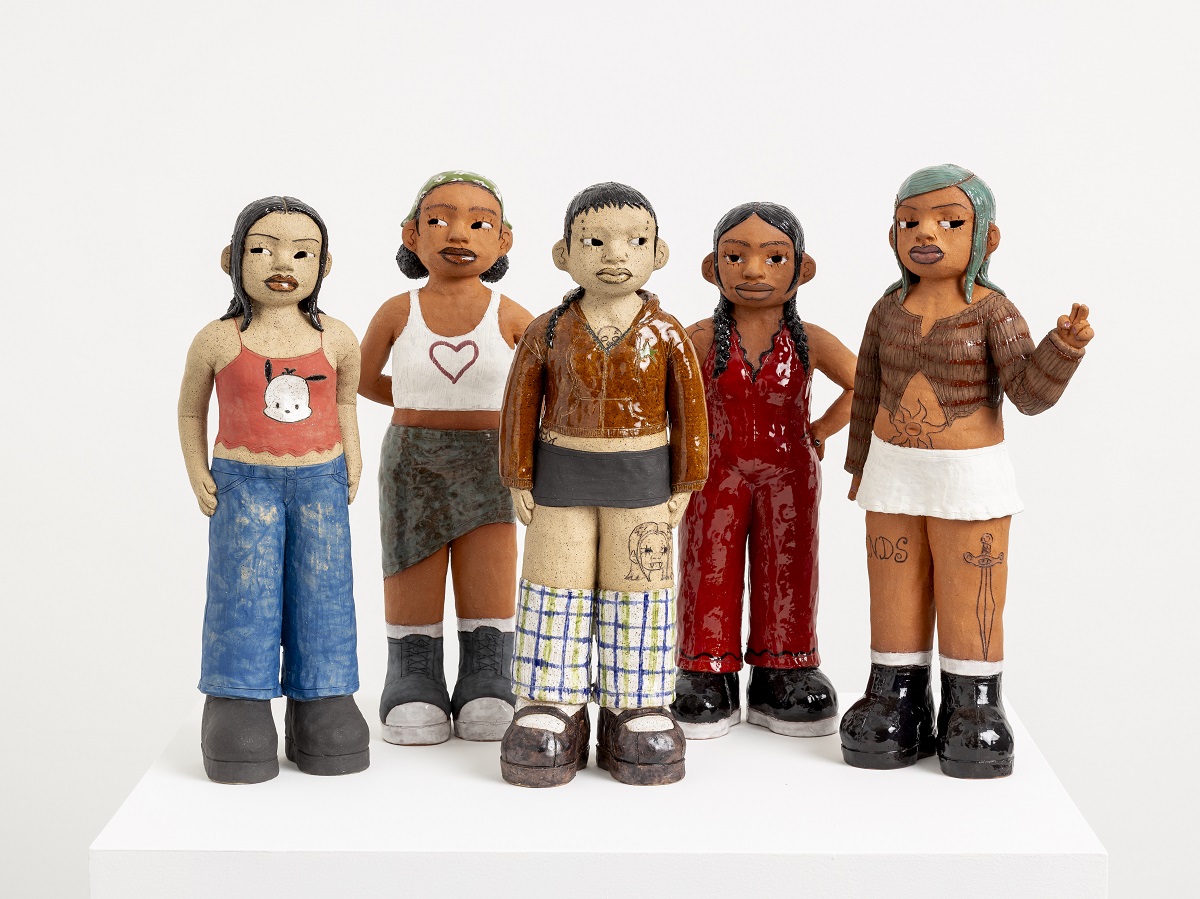 Permission from artists.
Permission from artists.
BY EMMA CIESLIK September 4, 2025
Joy Machine's new exhibition Speak of the Devil opened this past August 9th and will run through September 20th. Featuring the ceramic and mixed-media works by Chicago artists Haylie and Sydnie Jimenez, the exhibition explores the phenomena by which a person or their memory can be conjured just by saying their name. For the two artists featured in this exhibition, the creation of art is also a form of conjuring. Raised in a devoutly Catholic home, Haylie and Sydnie extrapolate the impact of religious fear surrounding speaking evil into being.
This exhibition which foregrounds figural ceramics by Sydnie and flat etchings by Haylie with tattoos, piercings, and punk stylings explores the common fear surrounding Chicago--which they now call home--and the South, where they were raised first in Florida and then in Georgia. I loved the exhibition for foregrounding queer, Black and brown friends and neighbors embracing and celebrating one another--conjuring their chosen community, often a community that is demonized and ostracized by the Church, by simply saying their name.
After the exhibition, I sat down with Haylie and Sydnie to ask about the power of this exhibition and creating a safe space for Black and brown LGBTQ+ individuals and communities. Enriched by Catholic lore and aesthetics, Haylie and Sydnie create a ceramic world wherein their chosen families and communities are etched and immortalized in stone, and often visualized through the union of the divine symbolism of angels and saints alongside the piercings, tattoos, and punk stylings of queer subcultures. During a time when Black and brown LGBTQ+ peoples are being targeted and disappeared by state-sanctioned violence (as they have been decades prior), Haylie and Sydnie imagine a world where we are sanctified by saying our names, conjuring our communities, even when to do so is illegal.
Cieslik: Would you mind introducing yourself however you feel comfortable?
Haylie: I’m an artist and educator focusing in drawing and carving on ceramics currently, and always excited for moments of collaboration and what can emerge from them.
Sydnie: I am a ceramic artist interested in figurative sculpture. I am inspired by many things from ancient Mesoamerican ceramics to 1990s cartoons, and of course my friends and family.
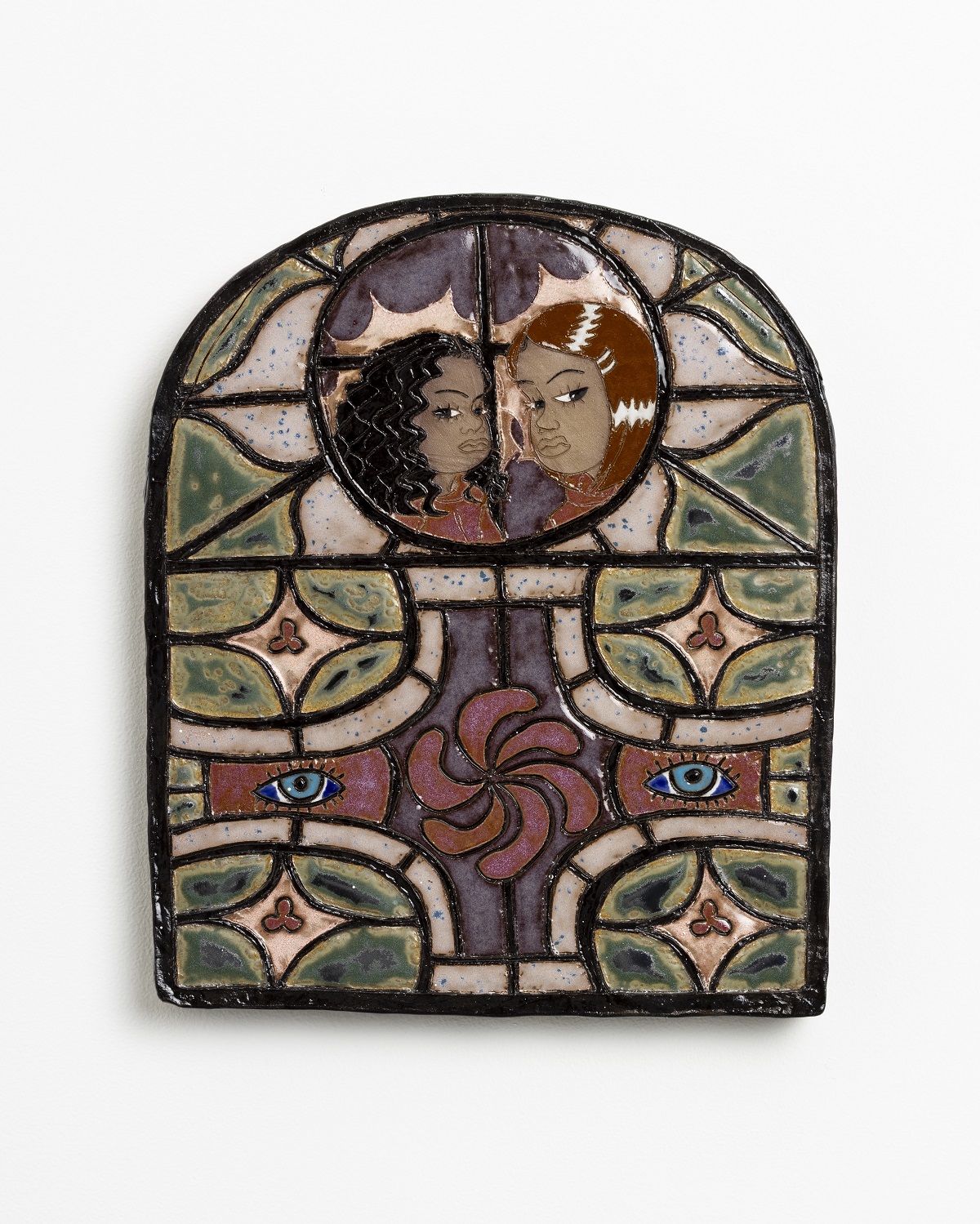 Ashland Stained Glass. Permission from artists.
Ashland Stained Glass. Permission from artists.
Cieslik: This exhibition explores the power of saying and naming within religion. Would you be able to share more about your religious upbringing?
Haylie: We grew up entering education through Catholic school up until 4th grade when we moved from Florida to Georgia and started to attend a public school nearby. I think that shift early on made the “quirks” of Catholicism and organized religion even more apparent, though we found ourselves in the Bible Belt of the South with all its fire and brimstone.
Sydnie: We were mostly raised by our single mother who isn’t extremely religious but definitely has a religious family. Moving from a majority Catholic to majority Protestant region lets us know that religion and spirituality can be very individual and personal, and the rules change depending on the denomination. I remember going to a Baptist church service with a friend and saying I worshipped the Virgin Mary. Imagine being about 10 years old and a grown ass man from the church condemns you to hell for worshipping the mother of God! Needless to say, we came to the conclusion early on that there is not really right and wrong about religion, only differences and similarities.
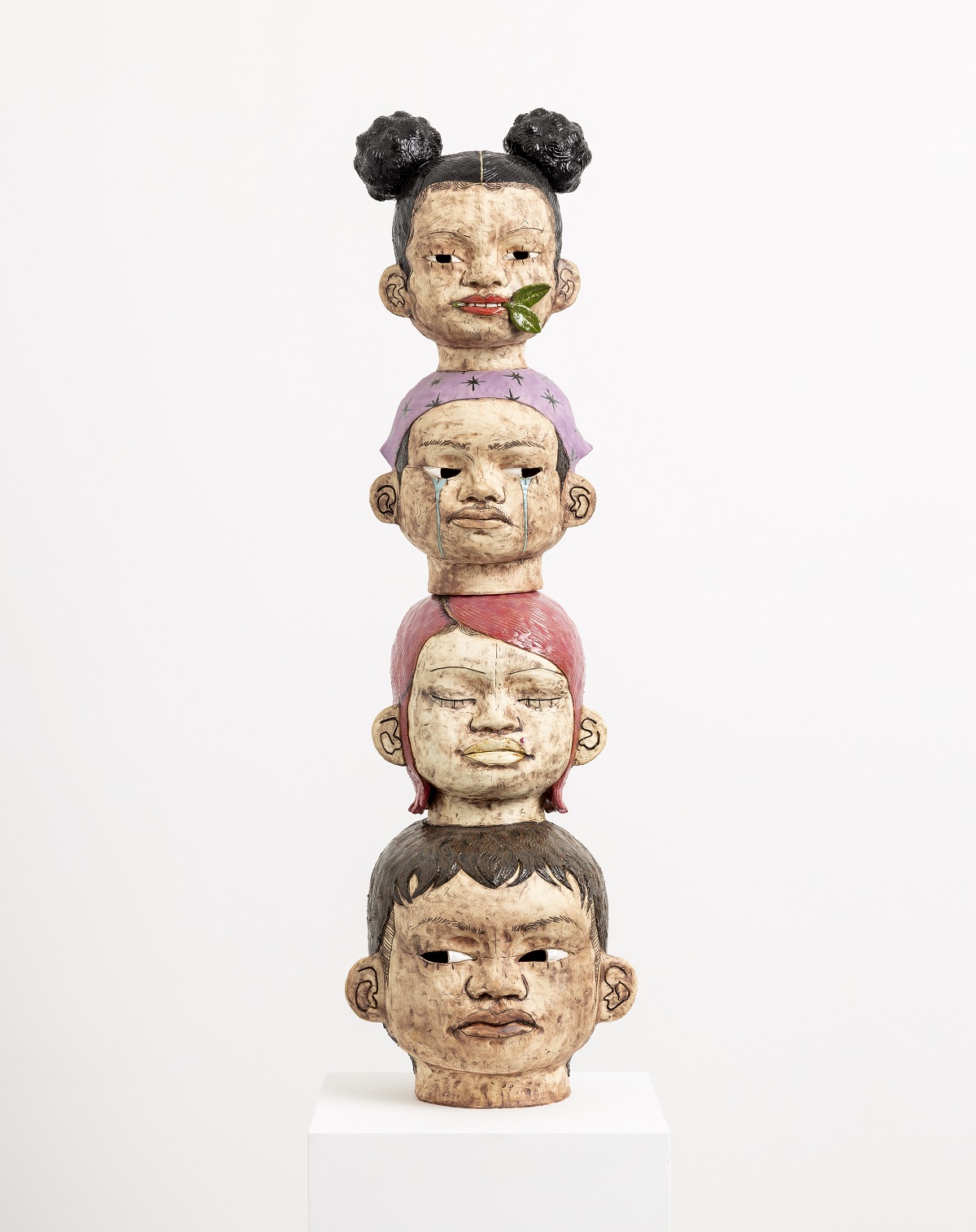 Tough to Grow(leaf). Permission from artists.
Tough to Grow(leaf). Permission from artists.
Cieslik: What is the significance of the exhibition’s title to you all, and invoking our names and identities out loud?
Haylie: When we came up with the title “Speak of the Devil,” we were thinking of the aspects of the work we wanted to include in the exhibition, including works that are literally based on people we know and love. Having “conjured” these people with stylized, expressive representations, “speak of the devil” felt appropriate. That goes hand in hand with the identities we share with these folks, including intersectionalities of marginalization within Black, brown, queer, and trans identities, and how these communities are being demonized and targeted particularly by our current administration and socio-political climate.
Sydnie: We were also thinking about Catholic lore and aesthetics, hence the ‘Guardian Angel’ sculptures and ‘Stained Glass’ works. Basically trying to create a sacred and safe place for our people to walk in and feel comfortable and seen.
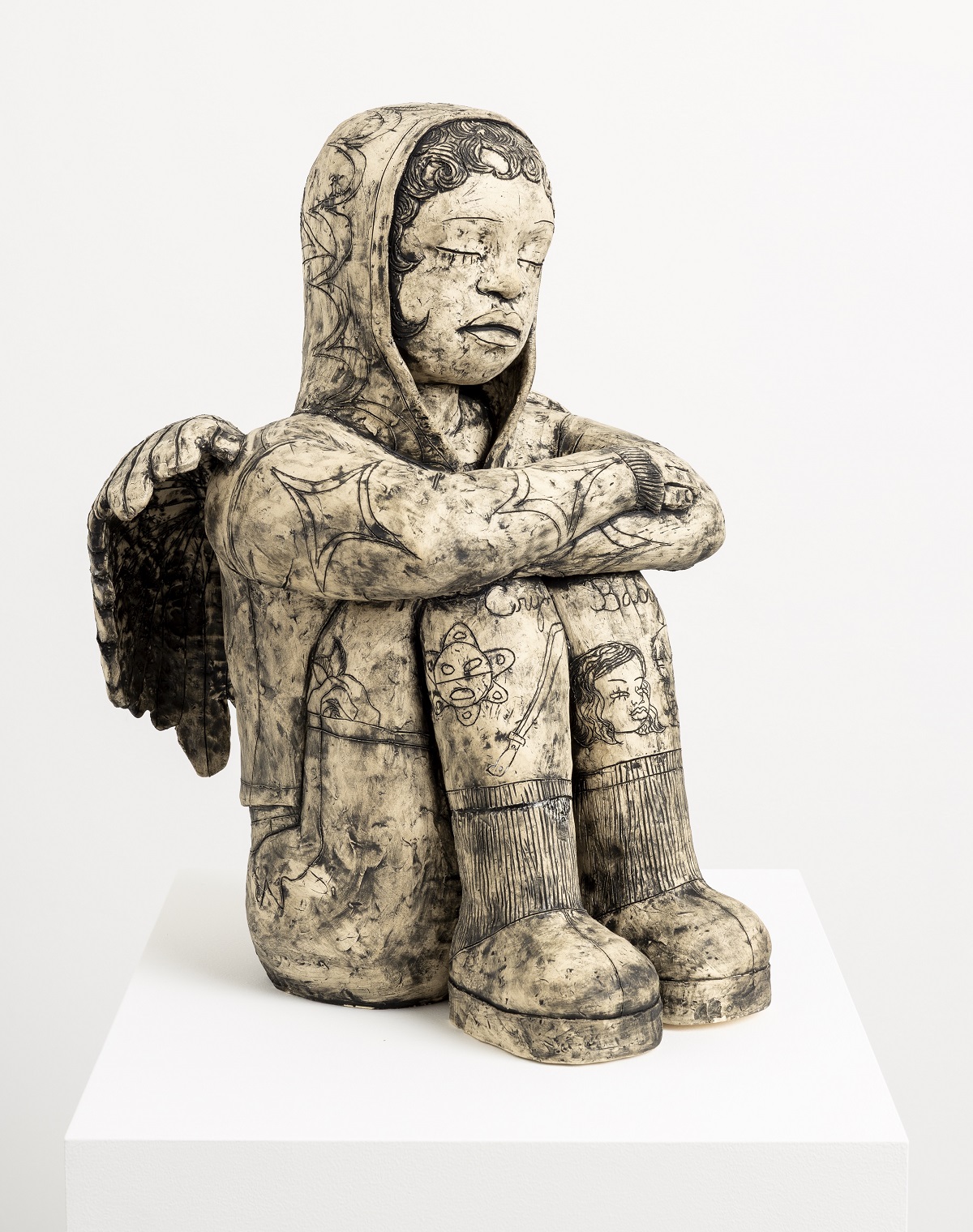 Hooded Guardian. Permission from artists.
Hooded Guardian. Permission from artists.
Cieslik: This is a powerful exhibition right now, as LGBTQ+ people are systematically targeted through anti-queer and anti-trans legislation, often supported by far-right Christian politicians who are pushing for schools, libraries, and other public institutions to remove queer representation, to not "say gay." Why is this representation important right now?
Haylie: This question is so key! Our queer and trans peers deserve to be celebrated in general but especially in light of these attempts to demoralize these communities through discriminating and hateful legislation. Queer folks, that is to say anyone that feels excluded from the white, christian, heteronormative, sphere of social standings, have been the leading cultural makers of the world forever; it feels important to represent and uplift gestures of expression within these communities to help us all prosper and grow.
Sydnie: LGBTQ+ people have always been here and will always be here despite the bullshit going on in the United States government. The least we can do is represent.
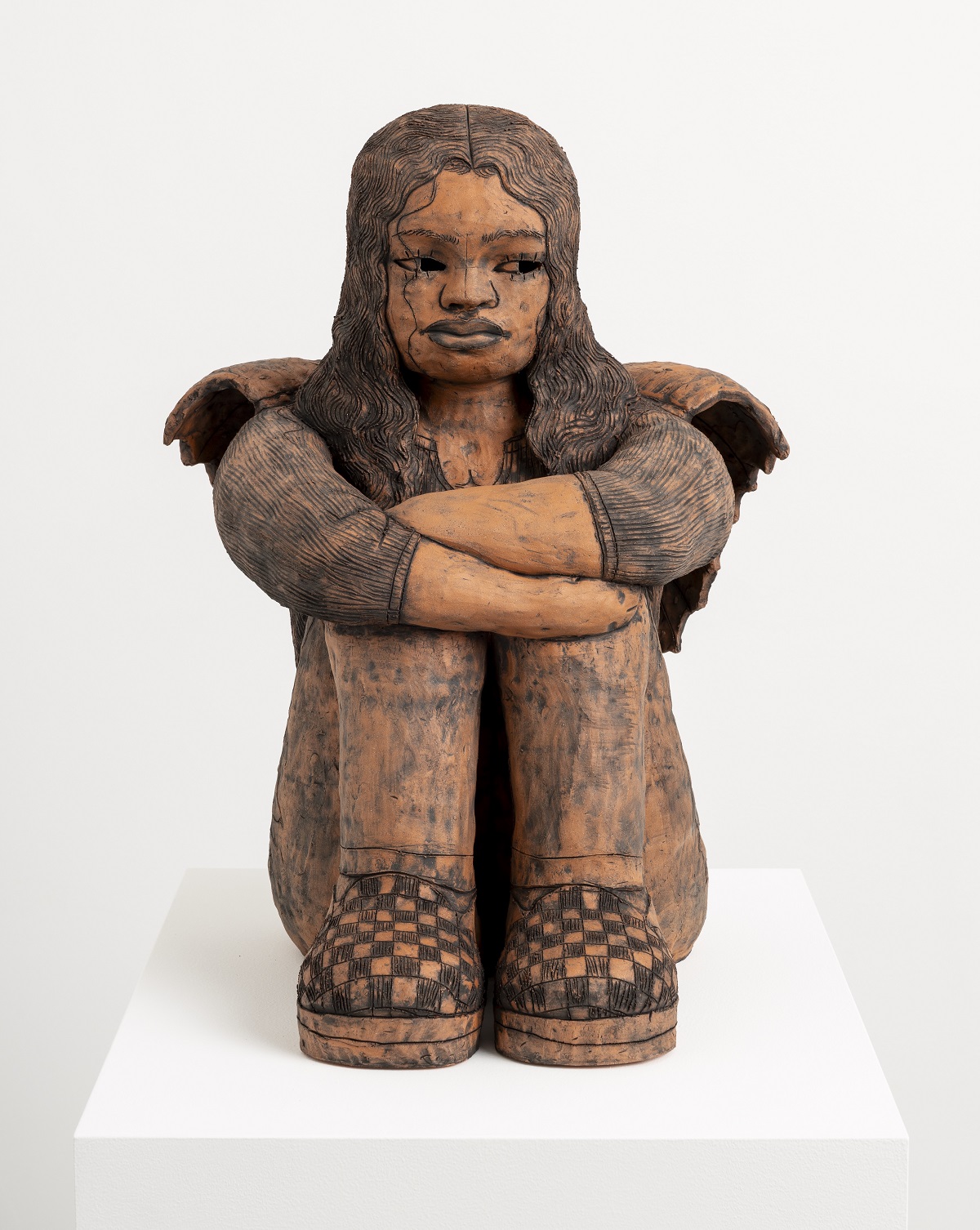 Curtain Hair Guardian. Permission from artists.
Curtain Hair Guardian. Permission from artists.
Cieslik: In this same vein, how does your exhibition explore the impact of summoning through art in light of Eleanor Heartney's new piece in Art in America? Who do you hope feels held and drawn to this exhibition?
Haylie: People who see the works and feel a familiarity with who and what we are depicting, and feel a connection with the importance of essentially “carving into stone” these figures in instances of play, anger, tenderness, etc.
Sydnie: What is summoned through our works is what those who experience it take away from it. When I am making work, I feel like I'm releasing a lot of negative energy, not in a bad way but in a way where I have an outlet to channel it and luckily (hopefully) an emotional and beautiful piece comes out. I hope this exhibition can be relatable to other Black and brown alternative/ queer people from poor immigrant backgrounds.
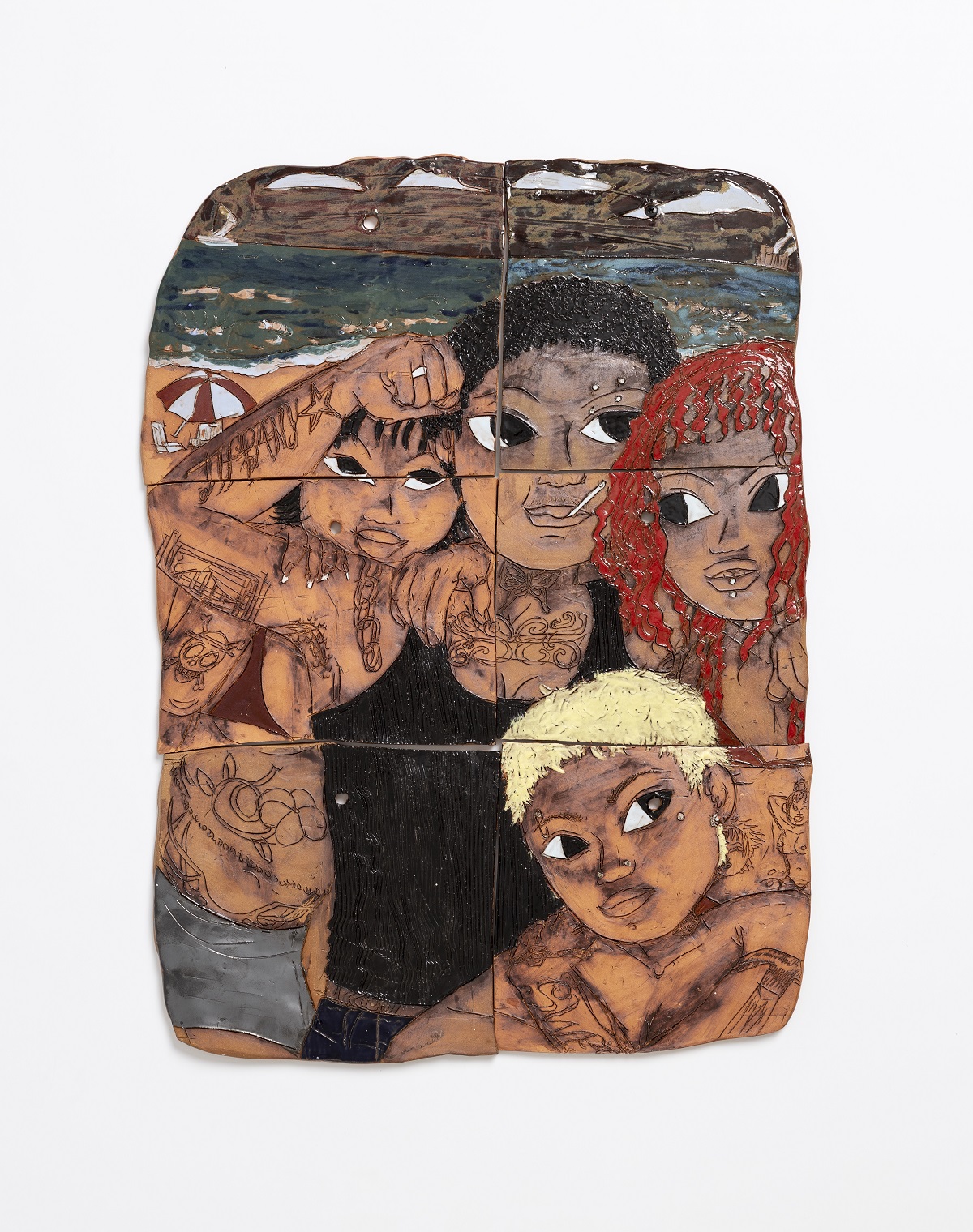 Lake Vibe. Permission from artists.
Lake Vibe. Permission from artists.
Cieslik: What inspired your fascination and commitment to separate mediums, including ceramics and flat etchings? And to create an exhibition together?
Haylie: Most of the show is all ceramic! I think the difference comes from how we use the material, but even then there is a lot of overlap. We made our first collaborative ceramic tile where I drew the image on and Sydnie relief-carved the image and finished glazing the piece. I have a background in animation and comics before I started working in ceramics, so I think that has always heavily informed the ceramic tile work I make.
Both our works have an unmistakable visual connection based on our shared experiences and influences, which makes collaborating directly through a shared exhibition only make sense.
Sydnie: This exhibition is all ceramic works with other materials occasionally used in tandem, such as the wooden tables inlaid with ceramic tiles or the rhinestones used as ‘piercings’ for some of the ceramic figures. Clay has a way of holding such memories and feeling, so I think it is perfect to portray familiar figures, memories, and echoes of spirituality.
Cieslik: How does your shared background inform and enrich this exhibition?
Haylie: Our shared background, evidence of two intersecting perspectives, strengthens what we claim through what we make, which strengthens the exhibition’s pertinence and a sense of urgency.
Sydnie: We have been in proximity literally since our mother’s womb, so we have had all our lives to influence and be influenced by each other’s thoughts, interests, opinions, friends, etc. and yet still be individuals! It really is a special relationship to have, a collaborator to bounce ideas off of from the start.
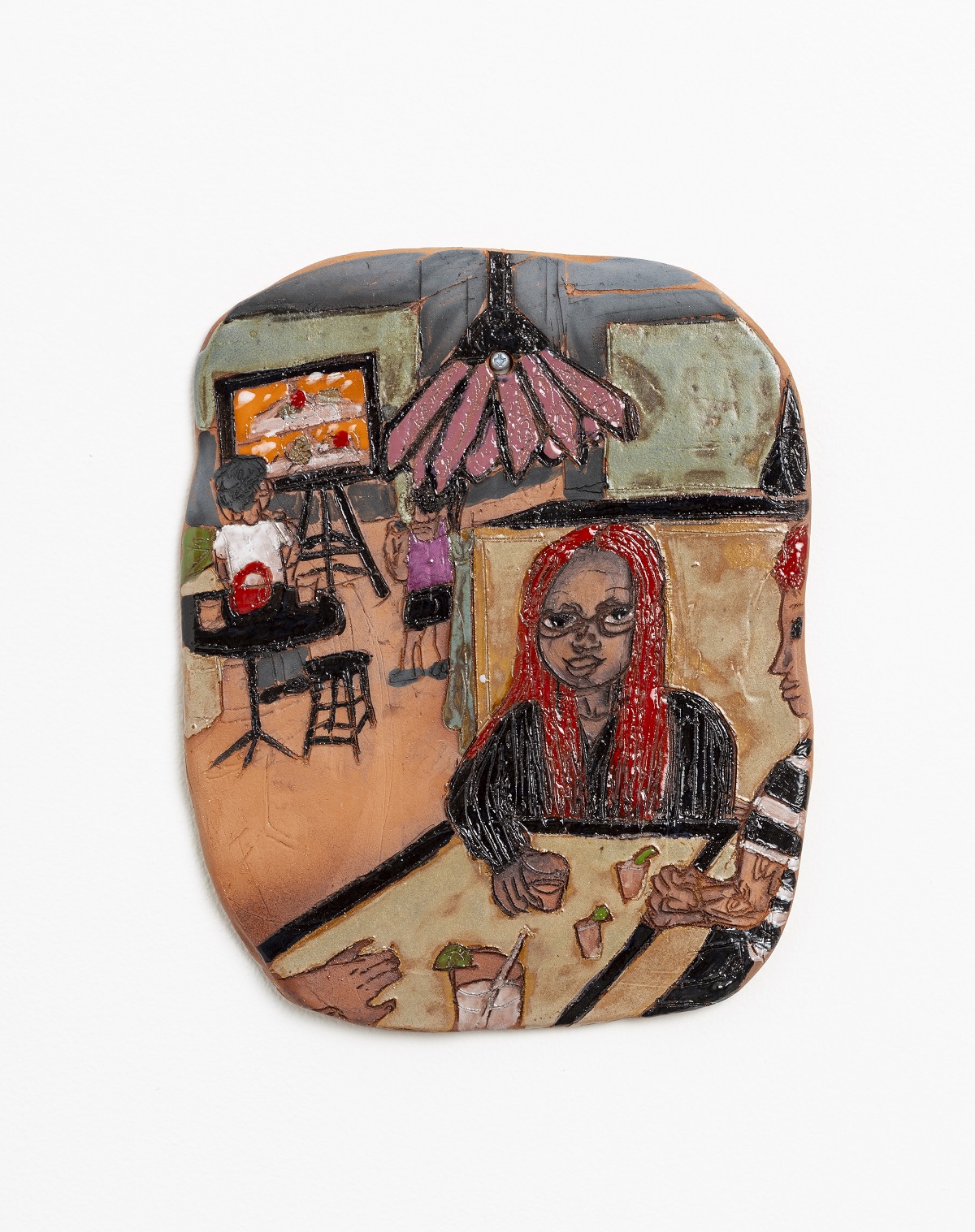 Game Night. Permission from artists.
Game Night. Permission from artists.
Cieslik: Are there specific people that you depict in your art, and how did you meet them? Why is it important to visualize and celebrate queer and trans chosen families and communities of color?
Haylie: Particularly in this exhibition, a lot of the show is based on specific people in our shared communities. We felt it was important to represent real people in this exhibition in order to highlight directly how rich and incredible these communities are, even through so much painful, negative stigma.
Sydnie: Some of the works are inspired by friends back home in Georgia and Tennessee and here in Chicago, as well as family members. Always got to represent the community who constantly supports, challenges, and grows with us. WM
Speak of the Devil is on view until September 20. Sydnie will teach a two-part hand-building workshop at Joy Machine on September 7 and 14. Join us for an afternoon session of pinching one of her signature head pots fit for a small plant. All materials will be provided, and tickets will go on sale this month. Learn more about the opening, upcoming exhibitions, and events at www.joymachine.art.

Emma Cieslik
Emma Cieslik (she/her) is a queer, disabled and neurodivergent museum professional and writer based in Washington, DC. She is also a queer religious scholar interested in the intersections of religion, gender, sexuality, and material culture, especially focused on queer religious identity and accessible histories. Her previous writing has appeared in The Art Newspaper, ArtUK, Archer Magazine, Religion & Politics, The Revealer, Nursing Clio, Killing the Buddha, Museum Next, Religion Dispatches, and Teen Vogue
view all articles from this author








